
ARCHIPENKO
and the Italian Avant Garde
Estorick Collection of Modern Italian Art, London
4 May – 4 September 2022
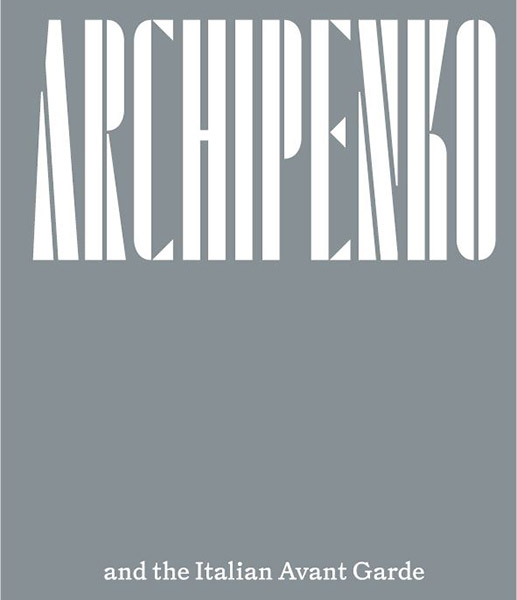
Over the course of the past two decades, the Estorick Collection’s
exhibition programme has explored the various relationships between
Italian art and that of other nations, such as that which existed between
Futurism and British Vorticism. However, the present exhibition goes
a step further, as the relationship between Archipenko’s imagery and
Italian art went both ways.
The influence of Futurism on Archipenko’s work is undeniable,
but so too is the reciprocal influence of his own work on Italian artists
– particularly those who were working in the climate of the inter-war
‘return to order’, who were keen avoid the trappings of a ‘new’ traditionalism
without lapsing into an outmoded fragmentation of form,
and for whom Archipenko’s fluid, biomorphic forms represented
something of a solution to this conundrum. The exhibition aims to
highlight some of these relationships, ranging from striking Futurist
correlations to more subtle echoes discernable in the work of artists
such as Amedeo Modigliani.
The exhibition offers another important link with our own collection
insofar as Eric Estorick met Archipenko through the dealer
Klaus Perls in the late 1950s and went on to handle a number of important
works by the artist. The Estoricks exhibited his work at the
Grosvenor Gallery on various occasions, hoping ultimately to organize
a large show, and in 1961 presented a solo exhibition at their Gallery
comprising 20 sculptures and five ‘sculpto-paintings’.
This exhibition would not have been possible without the enthusiasm
and dedication of many people; I would like first to thank Matthew
Stephenson for suggesting this project, and for his constant support
throughout the process of its realization. The Estorick Collection is
naturally extremely grateful to all the lenders for their great generosity,
including The Archipenko Foundation in New York; particular
thanks go to Frances Archipenko Gray, who has been enthusiastic
about the show from the very beginning. I am also indebted to Maria
Elena Versari, the exhibition’s curator, whose great knowledge of her
subject has made this exhibition and catalogue so compelling. Finally,
I would like to thank Christopher Adams for his unflagging support
and help throughout this project, as well as my colleagues Luke Alder
and Claudia Zanardi.
Roberta Cremoncini
Alexander Archipenko was born in 1887 in Kiev, Ukraine. After a brief
sojourn in Moscow, he moved to Paris at the beginning of the 20th
century, where he found himself working alongside a group of other
young sculptors who were all trying to escape the imposing - and suffocating
- shadow of Auguste Rodin. Many years later, he talked about
his disdain for Rodin’s work, and in doing so revealed something of
what he himself was looking for in those early years. Rodin’s sculptures
reminded him of the curved and contorted casts of humans from Pompeii,
forms shaped by the voids of missing bodies, hardened around the
contours of poses that those bodies assumed in a moment of despair
and death. It is something extreme and private, which gives us a direct
understanding of our body as a timeless shadow of suffering flesh –
something which maybe we should have been never able to see. In a
way, Archipenko told us that sculpture should be something radically
different, but what?
Young sculptors at the time agreed on a series of points. Elie
Nadelman, who exhibited with Archipenko in those years, used to say:
‘There is a plastic life and a life of living beings which are completely
different from each other’. Constantin Brancusi echoed him: ‘Look at
the ancient Greeks. When they depicted contortion and suffering in
their sculpture, that was the beginning of their decline’. The struggle
was to find a new style in sculpture, something capable of reuniting
two apparently irreconcilable elements. In the words of André Salmon,
these sculptors were ‘archaic and cutting edge’ at the same time. If
they were scrutinizing the entire catalogue of antique and primitive
styles, they did so in order to reconfigure their subject anew, through
a formal simplification that countered any remnants of naturalism. In
an essay devoted to Archipenko, the famous art critic and poet Guillaume
Apollinaire wrote: ‘The originality of Archipenko’s temperament does
not, at first glance, seem to reflect any influence at all from the art of
the past. Yet he has taken whatever he could from it; he realizes that
he is capable of going beyond it audaciously’. The sculptor’s engagement
with the past did not escape the press and the larger public. In a cartoon
by Georges Léonnec, published at the time of the 1912 Salon des
Indépendants, two ladies visit the galleries and stop in front of
Archipenko’s Venus (fig.1).
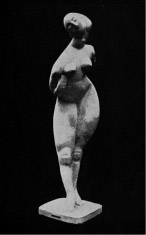
Fig. 1 Alexander Archipenko, Venus, 1912
plaster, h. 198.1 cm, current location unknown, reproduced in Roland Schacht, Alexander Archipenko, Sturm Bilderbuch 2, Verlag Der Sturm, Berlin 1924
The first, puzzled by the reference to Antiquity, asks: ‘Really? Do
you think that she is the sister of the one at the Louvre?’ And her friend
responds: ‘Yes, but they are not from the same father’ portraits(fig. 2).
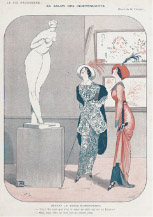
Fig. 2 Georges Léonnec, Cartoon featuring Archipenko’s Venus at the Salon des Indépendants
La vie parisienne, 30 March 1912
Archipenko’s
Venus, a work in white plaster, with her long triangular nose, curved
hips, thin waist, flat feet with elongated incisions to indicate the toes,
and conic small breasts, embodies both archaic and truly contemporary
aesthetic values. It calls to mind, in particular, the first attempts at
representing movement that we find in Greek archaic art, which had
been excavated and studied in the second part of the 19th century. We
find a similar formal solution, for example, in the Cycladic female
statuette donated to the Louvre in 1876. (fig. 3)
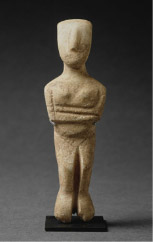
Fig. 3 Cycladic artist, Statuette, 2700–2300
BCE, marble © 1998 RMN-Grand Palais (Musée du Louvre) / Hervé Lewandowski
Venus’s large hips
and the round incisions that indicate the form of her knees derive instead
from the archaic kouroi of Greece, like the statue discovered in the
Temple of Apollo in Actium (now Punta, Greece) in 1864 that entered
the Parisian museum’s collection in 1874. But the entire figure of
Archipenko’s Venus is also twisting in a spiral, her bust leaning forward,
like her right leg, her head is bowing starkly to her right. Her pose has
a charming allure of modernity, almost mimicking the flirtatious stance
of the well-dressed ladies who, in Léonnec’s drawing, surround her at
the Salon. As in the case of her Cycladic cousins, the body of Archipenko’s
Venus is smooth, its outline cuts sharp, long, curves against the
background. Some years later the critic Roger Allard would identify in
Archipenko’s work ‘two combined sources of prestige’: ‘a modern culture
and a barbarous taste’. Writing of Cycladic sculpture, Edmond Pottier,
a few years earlier, had stressed the same confluence in taste between
the archaic and the modern: ‘This aesthetic taste that seeks in the
squeezing of the waistline[…] a very special kind of beauty, which shocks
and pleases our modern eye, used to more regular proportions’. In
other words, in the early 1900s, what was most radically archaic seemed
most in tune with the latest sensibility.
This confluence of faraway epochs and tastes, which informed
Archipenko’s primitivism, also fascinated a young Italian painter,
Amedeo Modigliani who, between 1911 and 1912, started working in
sculpture. In a series of preparatory drawings, we see the same Cycladic
details (wasp waist, round hips, circular breasts, long triangular nose).
Modigliani studied these features repeatedly. They went on to characterize
not only his later series of the Caryatids but even his portraits. (fig.4)
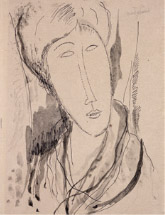
Fig. 4 Amedeo Modigliani, Head of a Woman
n. d., Ink and black wash on paper, 21 × 15 cm
Estorick Collection
At the same time, Modigliani’s drawings revealed
the influence that Art Nouveau illustrations had on his style: he used
a thick, assured line of contour. This line was the conceptual tool that
allowed him then to visualize his sculptures, proceeding from a two- to
a three-dimensional form. It was a line that was not concerned with
the environment: it securely cut out the smooth surface of his sculptures
from the stone. This linear quality was something that sculptors such
as Elie Nadelman, Henri Gaudier-Brzeska, Constantin Brancusi and
in particular Archipenko all strove for in those same years. It provided
a perfect bi-dimensional transition to their efforts to resurrect the
archaic technique of direct carving. Archipenko’s linear drawings
were often published in contemporary journals and exhibited along
with his sculptures. They reveal an incredible technical mastery and
allow us to comprehend not only the conceptual development of his
sculptures but also the way in which he saw bodies and forms in space.
Couple, for example, a pencil drawing created around 1911, shows the
elegant embrace of two figures, their bodies identified by a sequence of
smooth, curved sections. Like Venus, the fingers and toes are rendered
by simple linear incisions, the junctures of the body bulge as small
circles interrupting the evenness of the large surfaces.
Around this time, Archipenko, influenced by the Cubist painters,
progressively redefined his conception of space. The bodies of his
sculptures become more visibly composed of three-dimensional sections,
assuming a characteristic, faceted appearance. Still, in his work the
surface of the facets is often clean and well-defined, creating smooth,
rounded, angled sections interspersed with sharper, straight surfaces,
as in Draped Woman (1911) and Madonna of the Rocks.
Archipenko first created Madonna of the Rocks in plaster and painted
it red. The female figure has a certain Michelangelo-esque flare, with
the plastic pose of the legs and the dynamic torsion of the bust. It sits
on top of a cubic form, surrounded by soft, rounded elements intersected
by sharper ridges. These, along with the new Cubist group Family
Life, are works that the Futurist Umberto Boccioni probably saw in
Archipenko’s atelier when he visited it for the first time in June 1912
along with his friend and fellow Futurist Gino Severini.18 In February,
the Futurists had taken Paris by surprise with their group exhibition
of painting at the Bernheim-Jeune Gallery. In the preface to the catalogue,
they had accused the Cubists of ‘doggedly stick[ing] to depicting the
immobile, the frozen, and the static aspects of nature […] we, on the
other hand, are searching for a style of movement that, before us, has
never been attempted’. They also sought to attain ‘the painting of the
states of mind’.
In the fall of 1912, Archipenko exhibited Family life at the Salon
d’Automne. Along with Modigliani’s sculpted heads, Archipenko’s
sculptures quickly became the most popular works of the show, as evidenced
by the critical attention they received as well as the frequency
with which they were reproduced in the periodicals of the time. (fig. 5)

Fig. 5 Article featuring illustrations of Archipenko’s and Modigliani’s works exhibited at the Salon d’Automne, in Comoedia illustré: journal artistique bi-mensuel, vol. 5, no. 2, 20 October 1912
However, French critics interpreted them according to a system of
values established by Cubist and Futurist painters. Archipenko had
already been called a ‘futurist’ back in March of the same year, just a
few weeks after the opening of the Futurist show in Paris. In his favourable
review of the Salon, Claude Roger-Marx read Archipenko’s
and Modigliani’s works as an ‘astonishing effort on the part of intelligence
to break its own laws [...] so as to know the unknowable and to
think the incomprehensible’, called Modigliani’s heads ‘Cubist’ and,
alluding to Archipenko’s dynamism, concluded: ‘Rodin will appear the
most calm of the masters after the statues of Archipenko’. The art
critic for Les Annales also used Futurist texts to make sense of
Archipenko’s sculptures. Not only did he explicitly call Archipenko a
‘futurist’, but he also heaped praise on one sculpture in particular that,
for him, represented ‘the state of mind of a family: the father, mother,
son and even the dog are merged into one single being’.
This confused reading of the Futurist theory concerning the representation
of ‘states of mind’ was not what attracted the Futurists to
Archipenko. They were instead impressed by the Ukrainian’s unabashed
use of colour and by his volumetric accentuation of the plastic form.
The simplification and movement of Porteuse (fig. 6) (exhibited in the
spring of 1912 at the Salon des Indépendants), together with the spiral
construction of works such as Madonna of the Rocks, offered a plastic
counterpart to the search for dynamism found in their own paintings.
Boccioni at that time was busy trying to translate his theories into
three-dimensional forms.

Fig. 6 Alexander Archipenko, Porteuse, 1912
stone, Private collection © 2011 Christie’s Images Limited
Contrary to Archipenko, he had no systematic
training in sculpture and had spent his entire career as a painter
and illustrator. He felt, however, that Futurism should expand into the
realm of sculpture. At the end of the summer of 1912, his Manifesto of
Futurist Sculpture started to spread in artistic circles. It listed a series
of radical ideas, which went against any accepted practice in the field
of sculpture. Boccioni called for the use of non-traditional materials in
sculpture by saying: ‘perceiving body parts as plastic zones, in a Futurist
sculptural composition, we’ll use wooden or metal planes, immobile or
mechanically mobile, in order to depict an object; hairy spherical forms
for the hair, glass semicircles for a vase; iron wires and grids to depict
an atmospheric plane’. The climate of expectation that this manifesto
generated was incredible. As soon as the Futurists announced that
in 1913 they would present a new exhibition of sculpture, every newspaper
started to speculate about these announced ‘dynamic’ artworks.
Probably following the path outlined by Boccioni, Archipenko, in 1912,
started to work on his first assembled and by all accounts ‘movable’
sculpture, portraying a female juggler from the Medrano circus. (fig. 7)

Fig. 7 Alexander Archipenko, Medrano, 1912
Illustration published in Enrico Prampolini’s journal Noi, vol. 1, nos 5-6-7, January 1919
The arm of the juggler, in fact, could be lifted up and down. In the
second part of 1912, Picasso and Braque also started to experiment with
paper and cardboard sculptures. When a year later Boccioni exhibited
his sculptures in Paris, he made large use of plaster as a way to keep
together a plurality of materials. However, he had not forgotten the
treatment of space in Madonna of the Rocks and Draped Woman,
which helped him go beyond his first understanding of Cubism. If we
observe his famous Unique Forms of Continuity in Space (fig. 8, 9),
for example, we see a series of long, conical elements emerging from
the undulating surface of the body: one on the left shoulder blade, another
in front of the head. In the front, the left side of the head is defined
by a hollow section of a cone. Its smooth surface is sharply stopped,
right over the shoulder.

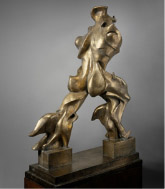
Fig. 8, 9 Umberto Boccioni, Unique Forms of Continuity in Space, 1913, bronze, cast 1950
The Metropolitan Museum of Art
Similarly, the surface of the right shoulder
smoothly projects outward until it stops with a sharp edge. This is a
feature that he found in Archipenko’s sculptures of 1911–1912, where
the geometrization of large masses is generally treated with soft and
rounded edges until, as we saw, they are abruptly stopped with a clean
cut. Even the detail of the sharp ridge in the lower part of the Madonna
returns in Boccioni’s sculptures, for example, on the right thigh of
Unique Forms and at the level of the hip in the right-hand side of Spiral
Expansion of Muscles in Movement. Later, Archipenko himself would
expand on the effect created by the hollow section of a cone, visually
inverting empty and full spaces, as in Woman Standing, and Seated
Woman.
Already in 1911, Apollinaire had celebrated the world of the circus
writing: ‘I even admit that the short improvised sketches [...] in which
the acrobats of Medrano excel seem to me the only spectacle that’s
worth listening to and watching
these days’. Archipenko’s Medrano
I, a multi-material sculpture representing
a female juggler from the
Medrano circus, paradoxically
encapsulated more closely the
ideas of Boccioni’s 1912 Manifesto
of Futurist Sculpture than the
works that the Futurist himself
exhibited a year later. Besides
being partially movable, Medrano
I included ‘wooden and
metal planes’, tin sheet and glass,
and even ‘iron wires’, used to suggest
the curve of the right shoulder.
It was conceived in order to flaunt
its assembled nature. Like some ancient dolls or, better, like an artist’s
mannequin, its joints were enormous wooden balls. Structurally,
however, the sculpture was organized around a vertical axis, so that
the figure’s femur was planted in the middle of the calf, a detail that
further reinforces its anti-naturalistic appearance. Medrano I was not,
however, an illogical turning point in the artist’s production. Archipenko
often relied on his earlier, more naturalistic works as a structural
framework for conceiving a radically modern image. Medrano’s juggler
references his earlier Kneeeling Woman (c. 1910) and also
echoes a similar work that Archipenko’s friend from those years,
Wilhelm Lehmbruck, had successfully exhibited in Paris. The face is
rendered with a round sheet of metal, bent at the centre, upon which
the artist attached a long, thin wooden rectangle to indicate the nose.
He also painted the woman’s eye and mouth on the metal surface. These
procedures recall those used by archaic sculptors in their definition of
the face’s details, and which Archipenko echoed that same year for the
nose of the male figure in Family Life. Medrano’s conical breast and
large, extended foot, in the shape of a trucated cone, are further details
that return here from previous sculptures. Archipenko would retain
these features in the second version of the sculpture, featuring a ballerina
from the same circus, Medrano II (fig. 10).

Fig. 10 Alexander Archipenko, Medrano II, 1913–1914
painted tin, wood, glass, and painted oilcloth, Solomon R. Guggenheim Museum New York
He conceived it the
following year, with a significant difference: this time it was mounted
against a flat, reddish background, establishing itself not as an autonomous
sculpture in space, but as a three-dimensional projection. A
drawing created at that time depicts a dancer’s pose in a similar way
and might have served as a study for the sculpture. Picasso’s
sculptures, illustrations of which first appeared in the fall of 1913, also
jut outward from a flat background, like collages that exit the frame to
enter into the space of the observer (fig. 11).
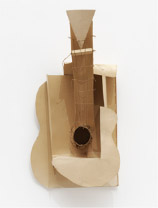
Fig. 11 Pablo Picasso, Guitar, 1912
paper, cardboard, string, painted wire, twine, tape, glue, The Museum of Modern Art, New York
As Christine Poggi has
shown, Picasso’s constructions destabilize the viewer, creating the
simultaneous impression that the work is two- and three-dimensional
at the same time. It is possible that the ballerina of Medrano II was
indeed some sort of ‘correction’ of the juggler of Medrano I, purged of
its Futurist characteristics and aligned with the new criterion of Cubist
sculpture that Apollinaire was outlining in 1913. Even the wooden
spherical joints are in fact flattened into mere painted circles. Seated
Figure, however, conceived in this period, reveals that Archipenko
did not completely shelve the model of Medrano I. Indeed, several of the
artist’s subsequent sculptures, like another Seated Figure, this time
from 1917, echo his earlier experiments with the Medrano constructions.
Some of his drawings even explicitly refer to them.
Archipenko would continue to develop his study of the relationship
between the body’s construction and the flat background in a mixed-media
work that is now destroyed, Woman in Front of a Mirror (fig. 12),
leading eventually to the development of sculpto-painting.
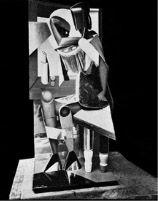
Fig. 12 Alexander Archipenko, Woman in Front of Mirror, 1914
Courtesy of The Archipenko Foundation
Compared to the two Medranos, this Woman’s head was conceived in a more
complex way, through a multiplicity of intersecting planar surfaces.
Eventually, Archipenko decided to turn the detail of the head conceived
at that time into an autonomous sculpture. Around 1913–1914,
Ardengo Soffici tackled the same theme in a style that followed more
closely the codes of analytic Cubism. He disassembled the
woman’s body, but still maintained a sculptural feeling: the muscular
masses of her back are large, curved sections. They are separated, but
the viewer can easily rejoin them in his mind, reconstituting the body.
It is at this time that Archipenko also moved away from the flat, wooden
silhouettes of his earlier constructions and the linear solutions of
his previous drawings. Now, his drawings and works on paper helped
him redefine his volumetric effects. In works like, Figure in Movement
and Dancing, he constructed his figures by adjoining
conical elements, employing collage and a variety of pigments (pastel,
chalk) to better visualize the effect of the curved surfaces. As Gino
Severini had done with his ballerinas, Archipenko subdivided
the body into pliant conical shapes to suggest energy and movement.
Severini’s studies, along with Léger’s, influenced how Archipenko
reorganized the arrangement of the body parts. First he did so in his
drawings and then he conceptually transitioned the two dimensions of
the drawings into the three dimensions of the sculpto-paintings and
sculptures. We can retrace this process in his later sculpto-painting
Figure, realized in the 1950s, which reworked the model of a 1917 gouache.
At the same time, his heads started to be streamlined into an
ovoidal shape that will become iconic for him. More and more, his figures
embraced the essentiality of the atelier’s mannequin, while increasing
their impression of energy.
He further experimented with the dynamicisation of conical shapes
in plaster works such as Carrousel Pierrot (1913), Boxers (1913–1914)
and Gondolier (1914), which he showed at the 1914 Salon des Indépendants
together with Medrano II. Popular amusements such as the circus, the
fair and the boxing match were the ‘tangible miracles of contemporary
life’ that the Futurists had identified as the best source of inspiration
for modern artists. It is puzzling to see the multicoloured surface of
Carrousel Pierrot (fig.13), a work influenced by the dummies that
topped the carrousels and the carnival floats (fig. 14), but conceptually
tied to the study of balance and mass that Archipenko had addressed
already in Porteuse.
The French counterpart of Harlequin seems
to have stolen his famous costume. We do not know if Archipenko had
originally thought of maintaining the plaster’s white surface to keep
up with Pierrot’s more traditional white outfit. It is clear that the work
now relates more seamlessly (and spectacularly) to the corsets of the
Medrano sculptures and, like them, it features several juggling balls
positioned around the body. More complex in its structure, Gondolier (fig.15)
resolves plastically some of the problems of the first Medrano.

Fig. 13 Alexander Archipenko, Carrousel Pierrot, 1913
painted plaster, Solomon R. Guggenheim, Museum, New York
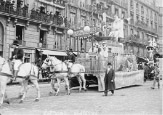
Fig. 14 Rol Photographic Agency, Third Thursday of Lent in Paris: The Float of Pataud, 1910
glass negative plate, Bibliothèque Nationale de France, Département Estampes et photographies, El-13 (70.2)
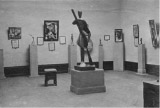
Fig. 15 Installation view, Venice Biennale 1920, Courtesy of The Archipenko Foundation
The triangular corset and the different planes that composed the skirt
of the ballerina are now elegantly rendered in a multifaceted hourglass
structure that twists around the central axis of the legs and the diagonal
of the oar. The shoulders are a rounded, moon-shaped element.
The same detail reappeared in Seated Figure, and later expanded
in the ovoidal flowing coat of his Walking Soldier. This
latter work also reveals a further step forward in the artist’s later reassessment
of the human body. The conical limbs are here replaced by
tubes, an element that also characterizes several of Archipenko’s
sculpto-paintings. It is a choice that scandalized the press both in Paris
and, later, at the Venice Biennale, because it seemed that Archipenko
used industrial, ready-made objects in his works, blurring the divide
between the artistic and the everyday. In Paris in 1914, critics insisted
that the gondolier’s oar was indeed a stovepipe and drew a connection
with a famous Dahomey sculpture in the Musée du Trocadero, which
was indeed constructed by assembling pre-existing objects (fig.16).

Fig. 16 Ekplékendo Akati, Statue of the God Gou, 1859–1889
iron, Pavillon des Sessions, Musée du Louvre
Boxers instead, could not be mistaken for an African assemblage:
it is a monochromatic, abstract composition in which the movements
of the two athletes define large and smooth interlaced energetic triangular
surfaces, similar o Boccioni and the Futurists’ later experiments
with coloured dynamism.
1914 was a capital year for Archipenko in Italy: Carrousel Pierrot,
Medrano II and Boxers were bought by the young Florentine artist
Alberto Magnelli for his uncle’s art collection. Magnelli was a friend
of the Futurist Carlo Carrà and Ardengo Soffici, who was then co-editor
of the Florentine avant-garde journal Lacerba. It is possible that
the decision to bring Archipenko’s most radical works to Italy was an
indirect attack on the part of the artists reunited around Lacerba
against Futurism’s leader, Filippo Tommaso Marinetti, and its most
visible sculptor, Boccioni. Archipenko published two drawings in
Lacerba that reveal his ability to merge simplification and dynamism.
He later transposed one of them, first, into a bronze high-relief and,
later, a coloured gouache. Carrà also planned for art
critic Roberto Longhi to write a monograph on Archipenko - a significant
move, since Longhi was at the time finishing a book on Boccioni’s
sculptures. Still, Archipenko maintained excellent relations with
Marinetti as well, and was invited to exhibit in Rome that same year
along with other artists recognized as ‘international’ Futurists.
Significantly, the Roman show did not feature any Cubist artists,
erasing a stylistic and theoretical confrontation that had become quite
heated in the years 1913–1914. Archipenko remained part of one of the
most important collections of modern art in Italy that allowed for this
comparison. Magnelli’s visitors in fact could enjoy ‘Macchiaioli and
Archipenko, Picasso, Braque, Matisse, Carrà, etc.’
In his essay ‘Modern Life and Popular Art’, dated 15 March 1914,
Carrà clarified his position, writing: ‘Thank God Cubism is now dead
[…] In my opinion, the fundamental explanation for this artistic massacre
lies in the fact that all art which is constructed on intellectual
and cerebral foundations cannot last long. We Futurists are now
convinced that only by working the twofold mine of modern life and
popular art [will we be able] to create a modern primordialism’. Carrà’s
departure from Futurism during the period of the war did not cause
him to forget Archipenko. In 1913 he had devoted two drawings to two
kneeling figures of the circus: a circus ballerina and a trapeze artist.
Again, in 1914, he had sketched an acrobat with a semicircular head
that recalls that of Medrano. In 1917, however, as he was beginning
to define Metaphysical Painting, he returned repeatedly not to his own
works, but to the first version of Medrano. He created more than ten
drawings that, with minimal variations, repeat the theme of a kneeling
mannequin on a square platform, often accompanied by a putto or a
little angel (fig.17).
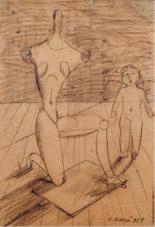
Fig. 17 Carlo Carrà, Mother and Child (Mannequin with Angel), 1917
pencil on paper Civico Gabinetto dei Disegni, Castello Sforzesco, Milan
The same mannequin returns, walking in an interior,
in another drawing dated 1918. Carrà used these drawings
to conceive his painting Mother and Child (1917), where, however, the
kneeling mannequin is morphed into a seamstress’s dummy. Covered
with sections of fabrics in different colours, the dummy’s bust recalls
another sculpture by Archipenko, Carrousel Pierrot, whose multicolour
corset reappears again in one of Carrà’s most iconic paintings of
the time, The Oval of Apparitions (1918) (fig. 18). In the same vein,
Giorgio de Chirico would also produce several mannequins that flaunt
their artificiality, like Archipenko’s earlier constructed sculptures (fig. 19).
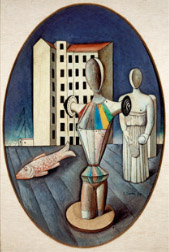
Fig. 18 Carlo Carrà, The Oval of Apparitions 1918
oil on canvas, Galleria Nazionale d’Arte Moderna, Rome
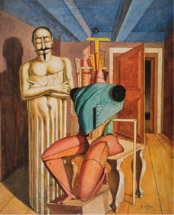
Fig. 19 Giorgio de Chirico, The One who Returns, 1918
oil on canvas, Musée National d’Art Moderne – Centre Georges Pompidou, Paris
In an essay published in the journal Valori Plastici (April – May
1919), de Chirico wrote: ‘Schopenhauer defines the insane as people
who have lost their memory. An ingenious definition. The logic of our
normal activities and lives is in fact a continuing band of memory of
the relationship between our environment and ourselves’. The artificiality
of the mannequin is uncomfortable because it is a betrayal of
the separation of these two realms: it is at the same time object and
person. In a paradoxical turn of events, when a year later Archipenko
exhibited at the Venice Biennale in the Russian Pavilion, critics interpreted
his sculpture in light of Metaphysical Painting, and of that world
of puppets and toys that characterized the work of Fortunato Depero
and Mario Sironi around that time. The influential sculptor
Antonio Maraini, for example, wrote: ‘If I had to classify Archipenko’s
sculpto-painting, I would put it between a prosthesis, an anatomical
model produced by Paravia, some tenpins, a rug with matchstick boxes,
etc. And this frees me from having to describe it’. Even his friend
Soffici interpreted Archipenko’s modern primitivism as a deliberate
attempt to embrace the practice of the humble muzhik, ‘who sculpts
and colours those peasant toys of the fairs of Novgorod and Kiev, which
are so naïvely beautiful, in their monstrous forms and shining and
blaring colours’.41 When the editor of Valori Plastici decided to publish
an illustrated monograph of Archipenko’s work, however, the choice
fell not on Medrano or any work that Magnelli had bought, but on that
first version of Kneeling Woman which reunited a hieratic pose with
an elegant stylization (fig.20).
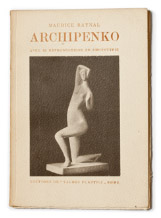
Fig. 20 Cover of Maurice Raynal’s monograph on Archipenko, featuring Kneeling Woman (c. 1910)
Edizioni di Valori Plastici, Rome 1923 © 2011 Christie’s Images Limited
The Futurists’ early christening of Archipenko as an international
member of their group in 1914 led to several unexpected outcomes in
the 1920s and 30s. First of all, they staged very visible and loud protests
when he was invited to exhibit at the Biennale. Marinetti wrote: ‘Inviting
foreign Futurists and excluding the works of the Italian Futurists like
Boccioni, Balla, Russolo, Funi, and Sironi is an ignoble and shameful
misdeed which does not deserve polemics, but kicks in the rear’. At
the same time, Archipenko proved essential for expanding the Futurists’
international connections after the war. He helped Enrico Prampolini
organize an exhibition of the Section d’Or in Rome in the early 1920s
and became one of the leading artists of the International House of
Artists led by the Futurist Ruggero Vasari in Berlin. It is in Prampolini’s
journal Noi that we find one of the few remaining illustrations of the
first version of Medrano and the friendship between the two is revealed
in a famous photograph by Bragaglia. Vasari also chose a work
by Archipenko for one of the ‘Futurist postcards’ that he printed in
conjunction with his journal Der Futurismus, and helped distribute
and advertise in Italy the monograph that Hans Hildebrandt devoted
to the sculptor in 1923.
But what is most astonishing is the impact that Archipenko had
on the development of Italian Futurist sculpture between the very late
1920s and the 1930s. It is an influence mediated first and foremost by
periodicals and books, given the fact that Archipenko did not exhibit
in Italy during that decade. His importance is nonetheless undeniable:
Futurist artist Regina Bracchi, for example, had only three books on
individual sculptors in her library. One was devoted to Michelangelo,
the others to Archipenko. The Futurist press in those years continued
to stress the centrality of Boccioni (who had died in 1916) for modern
sculpture, but it is easy to see the Ukrainian artist’s influence on the
movement’s younger sculptors. This owes to the fact that Archipenko
offered, throughout his career, a catalogue of disparate ways to visualize
the human body that were all equally groundbreaking. Like the
Futurists, he refused to treat the human figure as a mere reference to
canonical historical precedents, and this liberty, paradoxically, derived
exactly from his longtime meditation on archaic and primitive modes
of conceiving the body. For instance, his reassessment of the torso
resonates with the study of the human body that Prampolini
and Nicolay Diulgheroff were defining in those years. In
his paintings devoted to female subjects, Fillia used Archipenko’s
sculpto-paintings, transposing onto the canvas the sculptor’s use of
tubular elements. As Marzio Pinottini acutely reminds us, ‘if [Futurism]
wanted to champion an Italian art that could be truly universal, it could
not ignore the avant-garde movements’ of the time. This also applied
to Archipenko, who left his most lasting influence on Futurist sculpture.
We recognize it in particular in the treatment of the surfaces and the
choice of materials found in Thayaht’s works. As Fillia noted: ‘Thayaht
is aware of the hazard created by weight and by plastic matter, therefore
he tends to substitute volume with surface, transforming the latter into
a totalizing means of expression’.46 He conceived his Violinist
as a combination of smooth, flat curves that rise from a faceted base
and define the torsion of the body in large, vertical sections. It is a
solution that Archipenko had experimented with in the central, sinuous
element of Walking Soldier, which Thayaht probably had in mind.
Similarly, in Helmsman (a work that Thayaht conceived to be
painted), he reworked the harmonic interplay between smooth, curved
surfaces and sharp edges which Archipenko had mastered. Colour is
a distinctive feature of Archipenko’s works, and his 1930s sculptures
in terracotta and painted clay call to mind some of the contemporary
efforts of Lucio Fontana. It is Mino Rosso’s sculpture, however, that
reveals most strikingly Archipenko’s influence on Italian modern art.
His Mannequin and Skier closely reformulated the model offered
by Archipenko’s Gondolier, including the detail of the left arm
folding around the vertical axis of the standing body. His 1928 Feminine
Architecture echoed Archipenko’s famous inversion of hollow
and empty volumes in the treatment of the head. As Fillia
wrote, in his first sculptures, Rosso merged volumes of bodies and
atmosphere in an elastic (and here Fillia used a term that was crucial
for Boccioni’s theoretical development) ensemble. Later, Rosso’s group
sculptures, like Rugby Players and Boxer, still recalled
several of Archipenko’s features, such as his distinctive mannequins’
heads, the accumulation of masses and the large flat surfaces that
indicate the energy of the movement. They also revealed, however, a
distinctive treatment of volumes. As Pinottini points out, ‘the massive
quality of the blocks plays a crucial role, even if it is framed within the
inner workings of dynamism’. It is this dynamic element, the critic
clarifies, that constitutes one of the most significant links of Rosso’s
sculpture to the principles of Futurism; but his treatment of the
masses owes first and foremost to Archipenko's example.
Reassessing his long career in 1960, Archipenko remarked:
‘I find my name used by groups to which I never belonged, for instance
Dadaists and Futurists. In reality, I am alone and independent’. This
drive not only to engage with, but also to appropriate Archipenko’s work
was the result of the artist’s own success in establishing a new
working platform for future generations. As a veritable demiurge, he
was able to create a new catalogue of ways in which sculpture could
define itself as a modern enterprise, casting aside the shadows of both
Rodin and Pompeii.
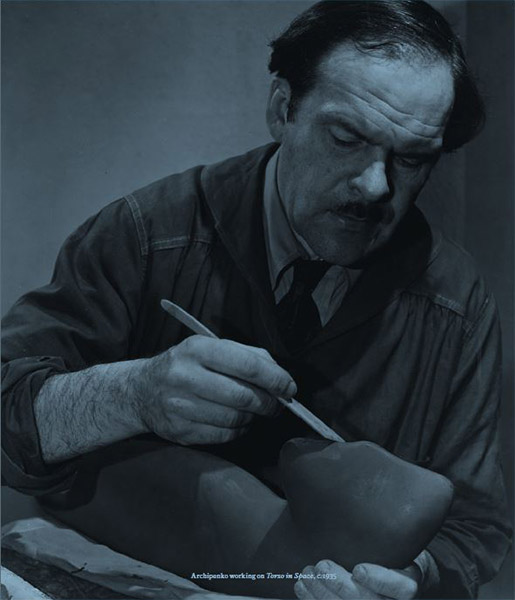
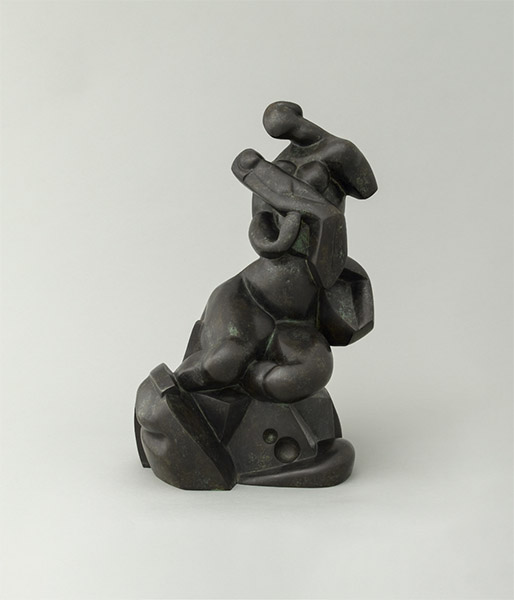 ALEXANDER ARCHIPENKO - Madonna of the Rocks, 1911/1912 |
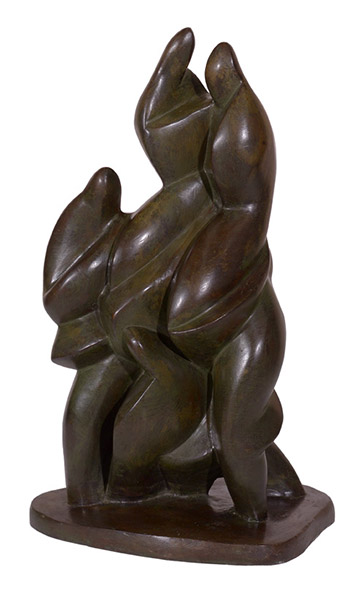 MINO ROSSO - Rugby Players, 1930 |
|
|
|
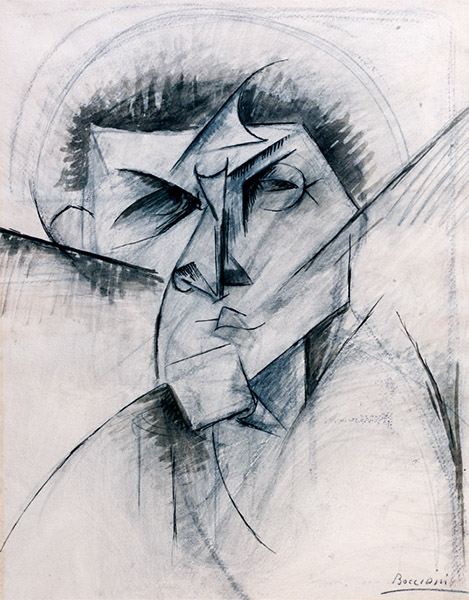 UMBERTO BOCCIONI - Study for ‘Empty and Full Abstracts of a Head’, 1912 |
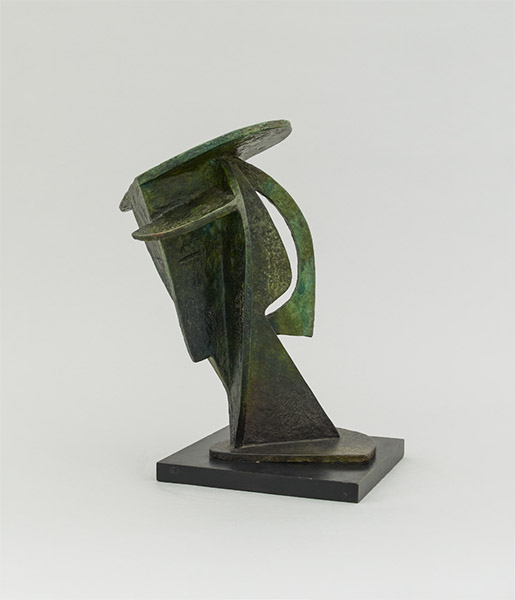 ALEXANDER ARCHIPENKO - Head, 1913/1958 |
|
|
|
 CARLO CARRÀ - Boxer, 1913 |
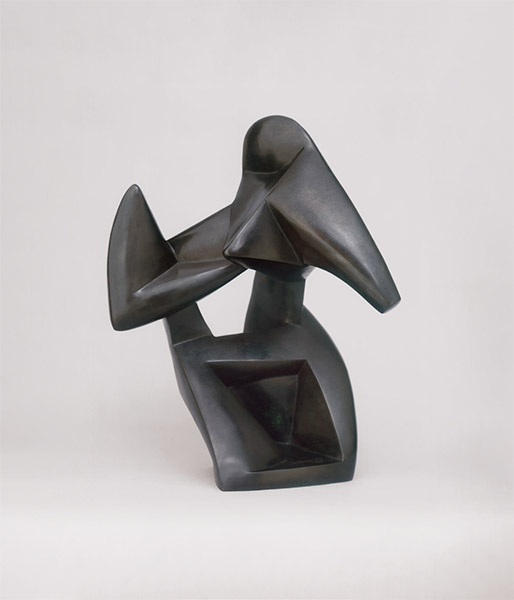 ALEXANDER ARCHIPENKO - Boxers, 1913/1914 |
|
|
|
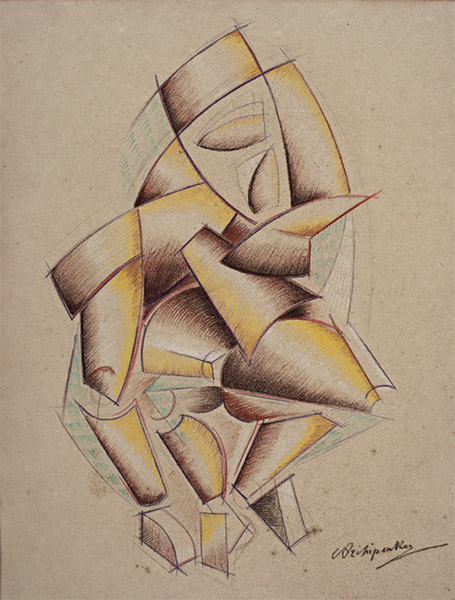 ALEXANDER ARCHIPENKO - Title unknown [Dancing], 1914 ca. |
 ROBERTO MARCELLO BALDESSARI - Dancer, 1915 |
|
|
|
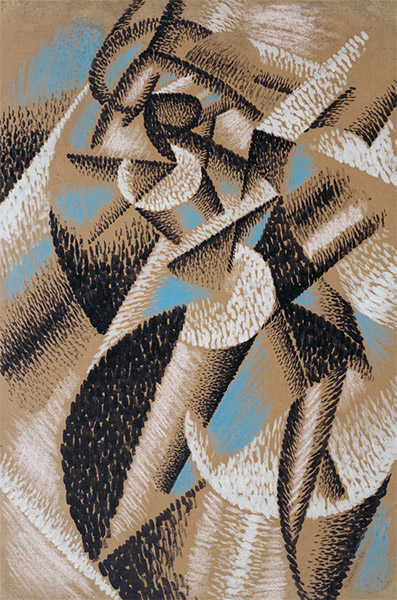 GINO SEVERINI - Dancer (Ballerina + Sea), 1913 |
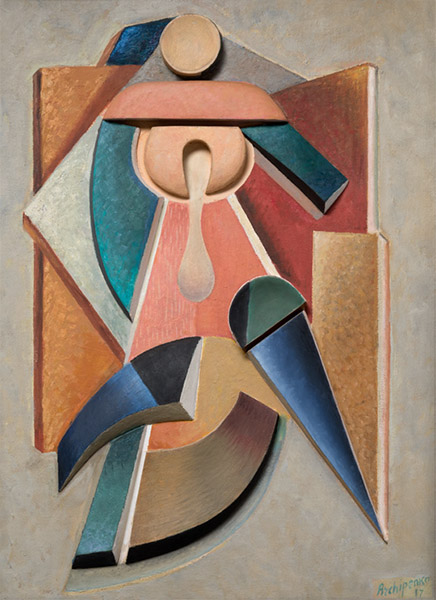 ALEXANDER ARCHIPENKO - Figure [version B], 1917/1921 |
|
|
|
 ENRICO PRAMPOLINI - Futurist Composition (Dynamism of Forms), 1914 |
 ALEXANDER ARCHIPENKO - Form on Blue Background, 1913 |
|
|
|
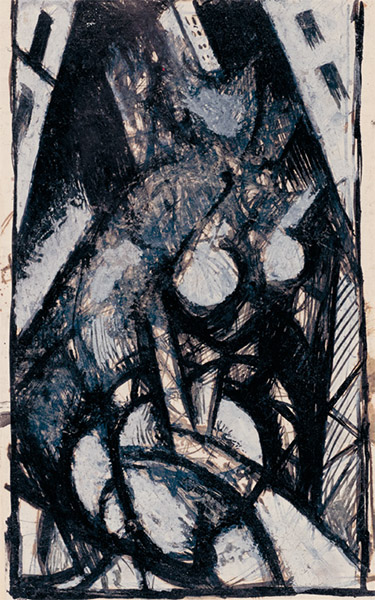 MARIO SIRONI - Futurist City, 1914 |
 ALEXANDER ARCHIPENKO - Title unknown [Walking], 1919 ca. |
|
|
|
 GIORGIO DE CHIRICO - The Revolt of the Sage, 1916 |
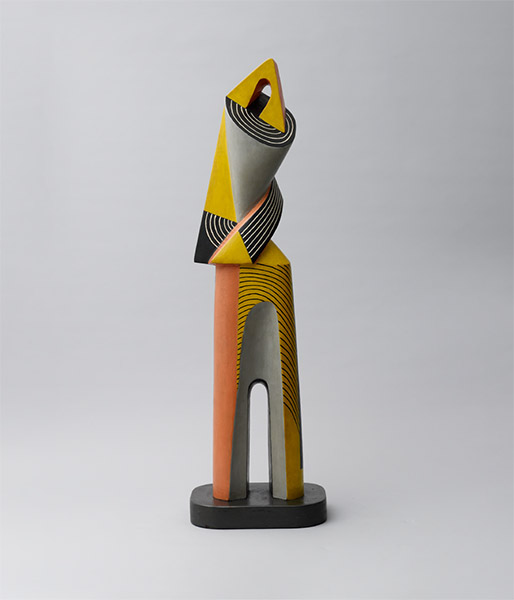 ALEXANDER ARCHIPENKO - Architectural Figure, 1937/1957 |
|
|
|
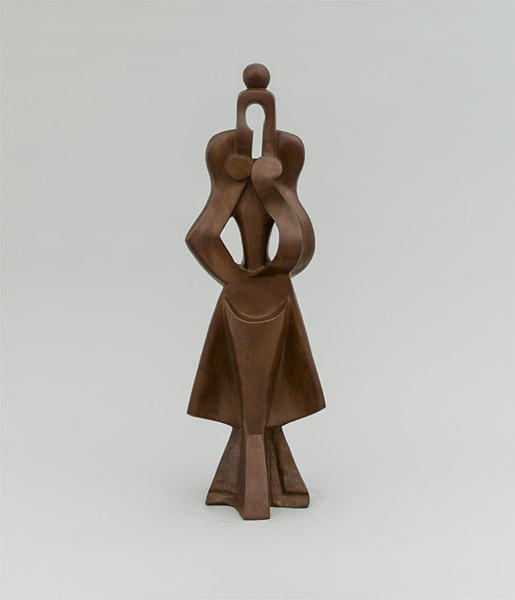 ALEXANDER ARCHIPENKO - Woman Standing, 1916/1954 |
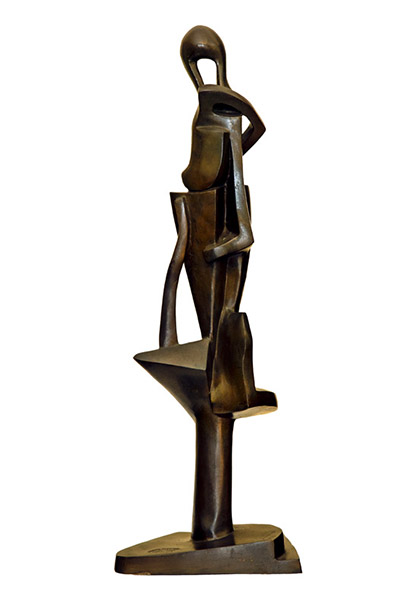 MINO ROSSO - Feminine Architecture, 1928 |
|
|
|
 ALEXANDER ARCHIPENKO - Standing Woman and Still Life, 1919 |
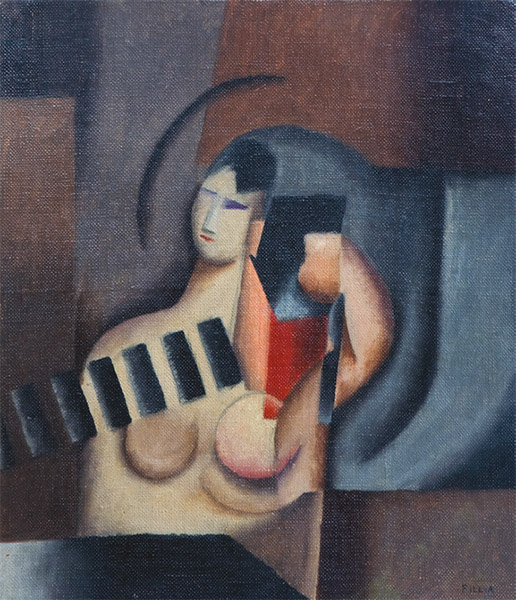 FILLIA (Luigi Enrico Colombo) - Musician, 1928 |
|
|
|
 NICOLAY DIULGHEROFF - Woman at a Window, 1927 |
 FILLIA (Luigi Enrico Colombo) - Musician, 1928 |
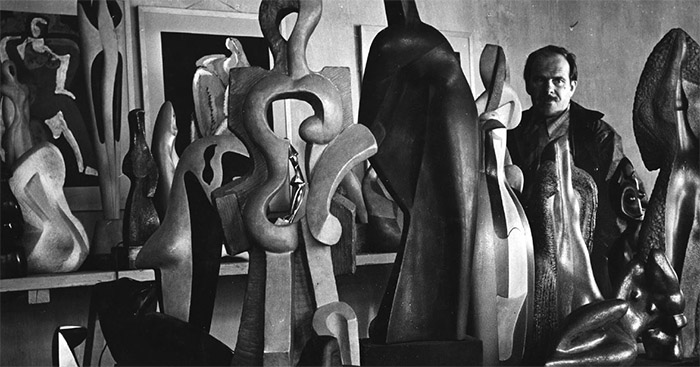
Info Mostra
ARCHIPENKO and the Italian Avant Garde
London, 4 may - 4 september 2022
The event is free with an admission ticket purchased for the same day.
Tickets can be bought at the entrance or online

